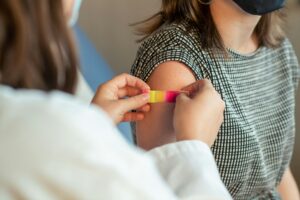
In the realm of women’s health, cervical cancer screening stands as a critical yet often overlooked procedure. Despite its importance, many women find themselves delaying this essential check-up. Dr. Janice Tan, a Sydney-based general practitioner with a focus on women’s health, emphasizes the necessity of regular screenings, stating, “The world doesn’t run without women.” Her observation underscores a broader issue: women frequently prioritize the health of their families over their own.
Dr. Tan, who also serves as the General Manager of Clinical Innovation at Bupa, has witnessed firsthand how women often neglect their health. “There are instances where I would see a woman and think I’ve seen her many times, but when I look at her records, I realize I haven’t seen her as a patient for two years or more,” she noted. This pattern of deprioritization is not only due to busy schedules but also a fear of discovering potential health issues.
The Evolution of Cervical Screening
Historically, cervical screenings have been perceived as uncomfortable and invasive, contributing to their avoidance. However, significant advancements in the procedure have emerged over the past few years. In 2022, the introduction of self-collected cervical screening marked a pivotal change. This method allows women to take a vaginal swab in a clinical setting, offering a more comfortable and private alternative to the traditional doctor-administered test.
Dr. Tan is a strong advocate for this new option, especially for women considered low risk for cervical cancer. “I love to spread the word about self-collection, because it’s been out for three years but sometimes the news doesn’t permeate into communities,” she explained. Women eligible for self-collection can discuss both options with their doctors, as it remains an effective method for detecting cervical cancer.
Raising Awareness and Encouraging Dialogue
Dr. Tan believes that increasing awareness and normalizing conversations about cervical and breast screenings are crucial steps in improving women’s health outcomes. “I would love for people to have more conversations around cervical screening and breast screening. The more you call it out, the more you make it a normal part of the conversation,” she said. By encouraging open dialogue, Dr. Tan hopes to embed these health checks into the fabric of everyday life.
The significance of cervical cancer screening extends beyond mere conversation; it is a life-saving medical procedure. “What we’re looking for is the presence of HPV [Human Papillomavirus],” Dr. Tan explained.
There are 32 strains of HPV, and two of them (16 and 18) are notorious for causing cervical cancer.
Early detection of these strains allows for timely intervention, potentially preventing the cancer from developing or spreading.
Looking Forward: The Importance of Regular Screenings
Regular cervical screenings provide women with the best chance of maintaining their health. Dr. Tan advises that women who haven’t had abnormal screenings in the past should undergo screening every five years. This recommendation aims to minimize the burden while maximizing the benefits of early detection.
For those seeking more information, Bupa’s website offers a wealth of resources on women’s health and wellness. However, the responsibility of spreading this vital message does not rest solely on healthcare professionals. Dr. Tan urges women to share their experiences and knowledge with friends and family, fostering a supportive community that prioritizes health.
As the landscape of cervical cancer screening continues to evolve, it remains imperative for women to stay informed and proactive about their health. By embracing advancements like self-collection and engaging in open discussions, women can take control of their health and well-being, ensuring they remain at the forefront of their own lives.






